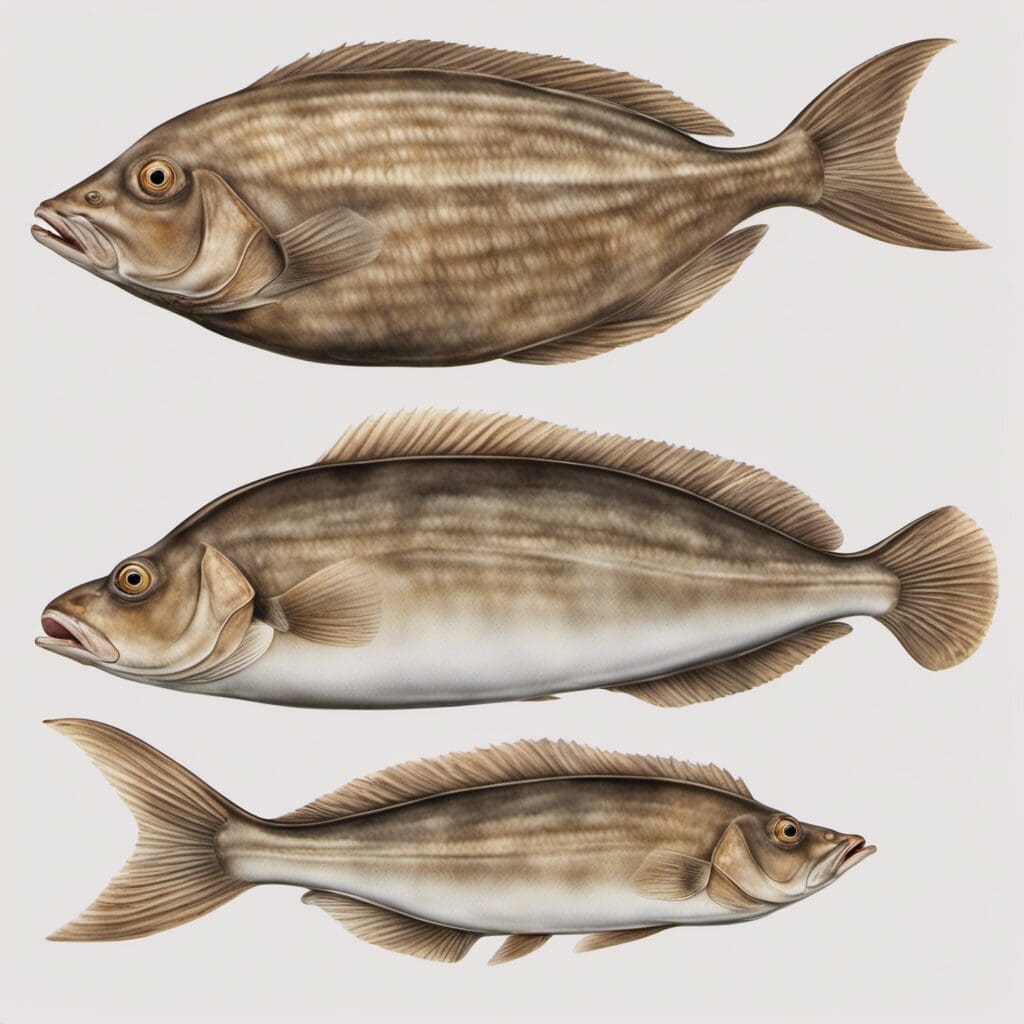Introduction
The Curlfin Sole, scientifically known as Pleuronichthys decurrens, belongs to the family of flatfish called Pleuronectidae. This species of fish stands out for its peculiar curled fin which edges from gill cover to the tail, giving it its descriptive name.
Conservation Status
As per the International Union for Conservation of Nature (IUCN), the Curlfin Sole has been categorized as “Least Concern”. The population appears to be stable and has no specific conservation measures in place due to its relative abundance.
Statistics
| Stats | Average | Range |
|---|---|---|
| Length | 18 cm | 12 cm – 25 cm |
| Weight | 200 grams | 100 grams – 500 grams |
| Average Lifespan | 7 years |
Distribution
Curlfin Sole are primarily found in the Pacific Ocean, ranging from northern British Columbia, Canada, to central Baja California, Mexico. No particular migration patterns have been observed for this species.
Habitats
Curlfin Sole prefer saltwater habitats and are typically found at depths ranging from 18 to 550 meters. They seem to adapt well to colder water temperatures, though specifics vary depending upon the region and season.
When and Where to See
These fish are sporadic in distribution and don’t follow a specific seasonal pattern. Typically, they are more likely to be spotted during day time at the ocean floor where they primarily dwell.
Best Fishing Locations
- Monterey Bay, California
- Vancouver Island, Canada
- Santa Catalina Island, California
- Pacific coast of Baja California, Mexico
How to Catch
Curlfin Sole are bottom dwellers, so bottom fishing techniques are recommended to catch them. The ideal bait is smaller shrimp and shellfish species due to their preference for crustaceans and molluscs in their diet.
Identification Guide
Curlfin Sole have a unique elongated, diamond-shaped body that is dark brown on the top with a white underside. The peculiary curled dorsal fin is distinctive to this species.
Culinary
Curlfin Sole has a delicate taste, with a slight sweetness and a distinctively creamy mouthfeel. Its fillets are usually pan-fried or griddled. They pair nicely with light, citrus flavours and herbs.
Additional Information
Curlfin Sole feed mostly on crustaceans and mollusks. Natural predators include larger fish and seabirds. Overfishing by trawl fisheries presents a human-induced threat, but this is currently not causing a concern due to the abundant population.
References and Further Reading
For more information on the Curlfin Sole, consider consulting online resources dedicated to marine life, or related scientific literature. Some recommended sources to further explore include FishBase, the Monterey Bay Aquarium’s Seafood Watch, and MarineBio

